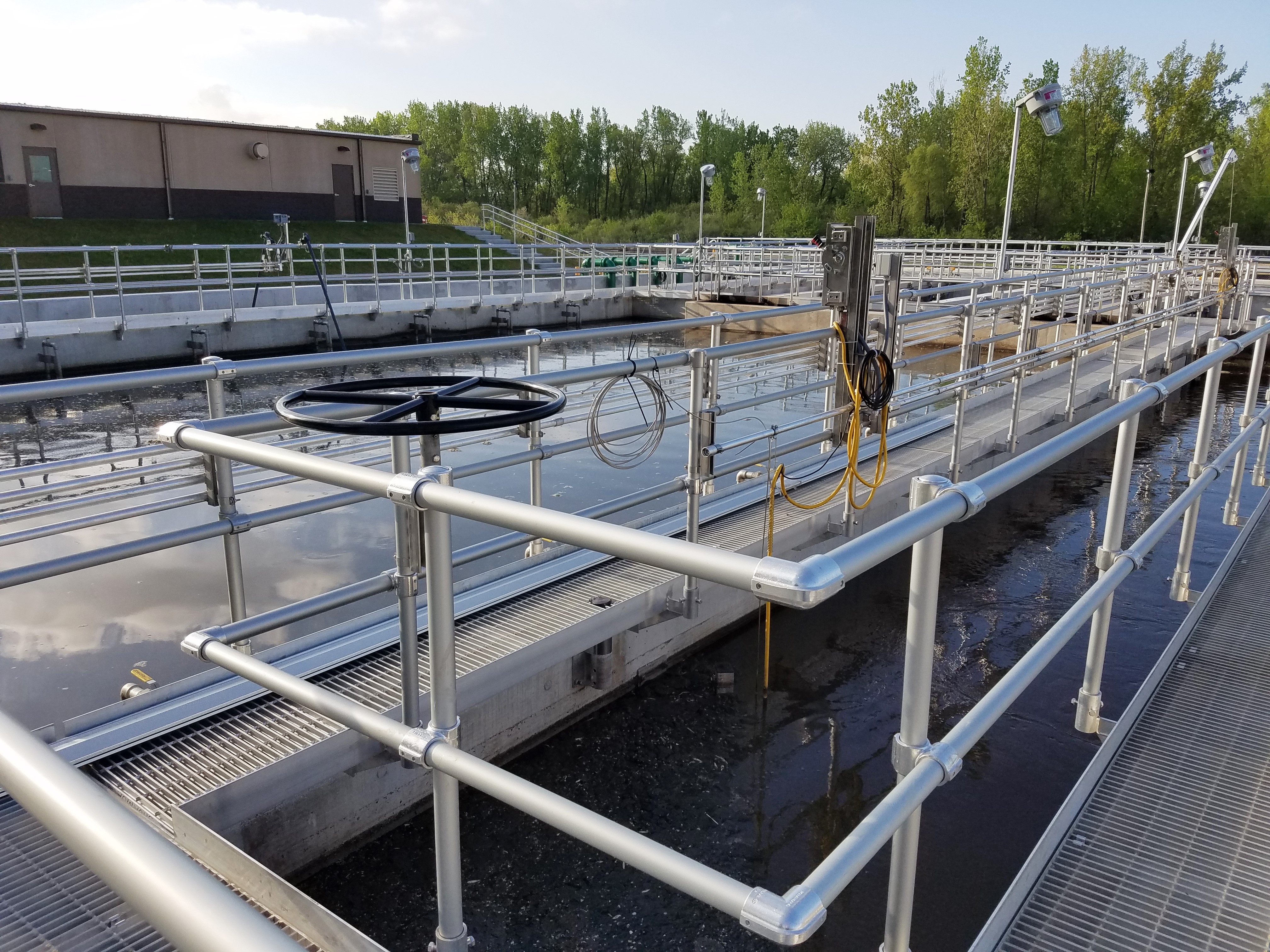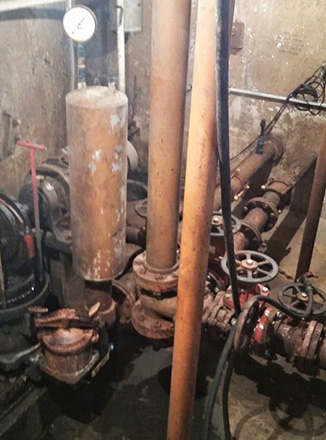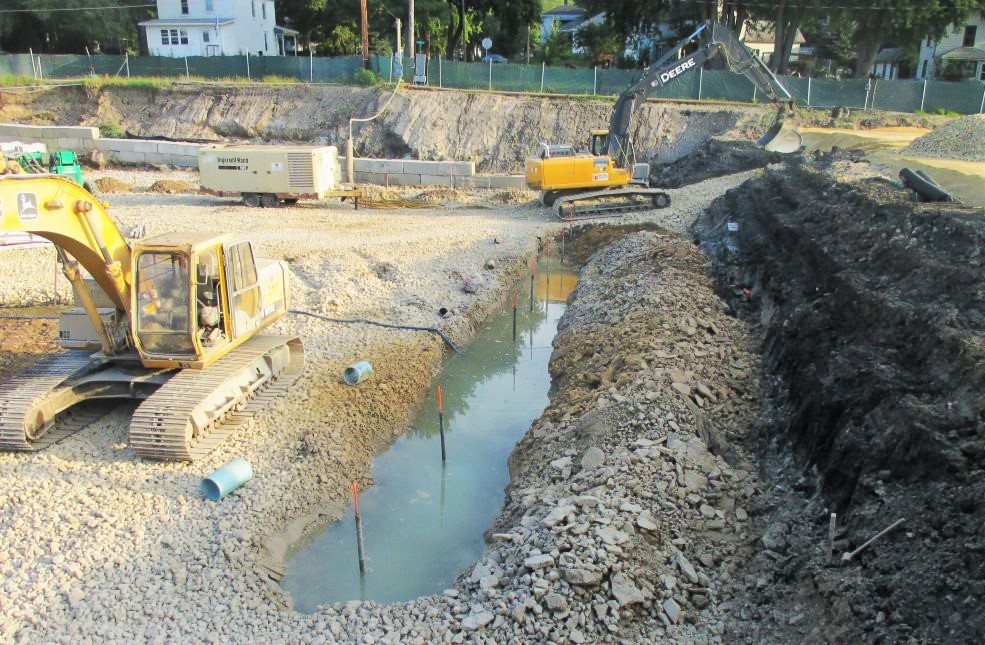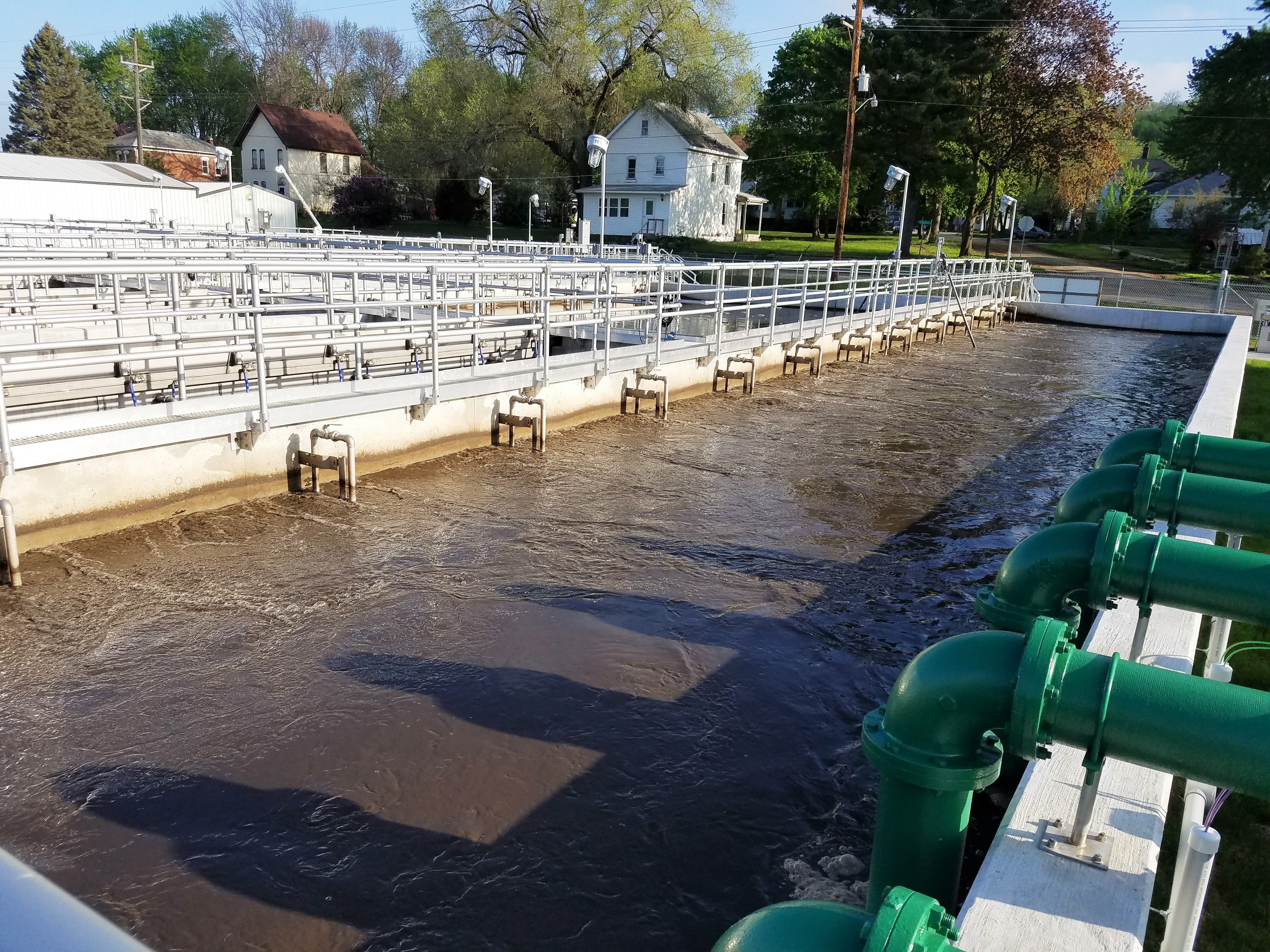Many good things come with age. A 71-year-old wastewater treatment facility is not one of them.

Completed new wastewater treatment facility.
The City of Savanna’s original wastewater treatment facility (WWTF) was constructed in 1947. Located within the 100-year flood plain along the Mississippi River, the facility had seen its share of flooding issues throughout the years. It had also been worked on multiple times to address vital upgrades and improvements and had needed to expand—twice.

Deteriorating anaerobic digester equipment at the City’s prior system.
Still, with the effects of repeated flooding, the City found itself struggling to maintain the useful life of the equipment and years of deterioration were beginning to threaten IEPA discharge and compliance standards.
It was time to eliminate the short-term fixes.
A safe, long-term solution
City officials decided to construct a new activated sludge plant at a new location. To convey wastewater and treated effluent to and from the location, two new lift stations and force mains as well as a new effluent sewer would also need to be constructed.
A variety of project challenges presented themselves. The new facility site was restricted in size, which required an exceptionally tight construction zone. In addition, high groundwater and poor soil conditions were present at the site, both of which were successfully mediated through the design process. Rock anchors were used to prevent the structures from floating during flood conditions and geotechnical engineering design was incorporated to compress or remove the poor soils. Although the overall plant would have benefited from a larger site, MSA was able to design the facility to achieve the City’s operational goals.

Rock anchors and Aero-Mod excavation.
The project also faced a tight design and bid schedule in order to secure grant funding that the City was hoping to attain. MSA was able to assist the City in meeting the timelines, who successfully secured more than $5 million in grant assistance for the project.
The wastewater treatment facility was designed to treat an average daily flow of 858,000 gallons and maximum daily flow of 2,521,000 gallons. The system was completed in 2017.

The finished treatment facility in Savanna.
